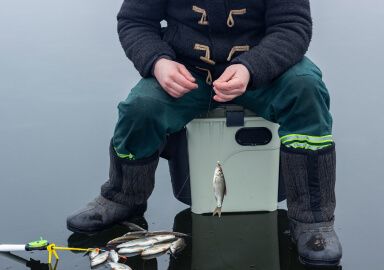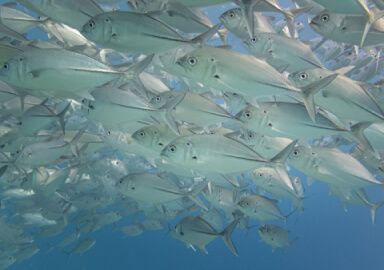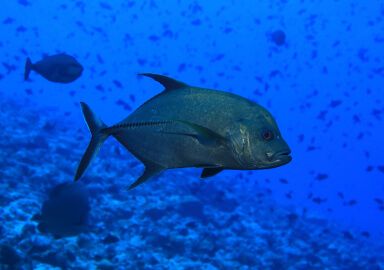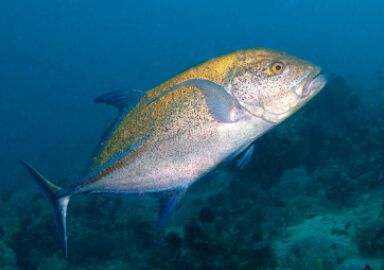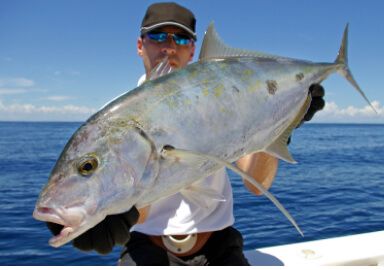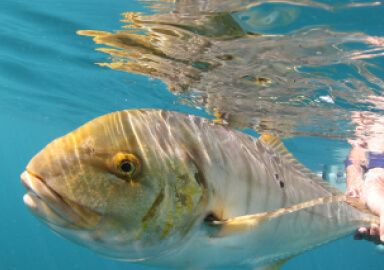Trevally
Trevalley is a common name for a number of predatory marine sport fish species of the Indo-Pacific area
View 61 listings
61
listings
–
price starting from
15
countries
–
to the nearest trip
Where and When?
Trevalleys are found throughout the Indo-Pacific area, mostly close inshore while some stray offshore. The size can vary from small to the giant trevally which can attain a maximum length of about 1.7 meters (67 in.) and mass of around 80 kilograms (176 lbs.). Juveniles of most species are usually found in estuaries or close inshore and, generally, larger specimens are more common in slightly deeper waters. Some large specimens, including giant trevalleys, occasionally enter estuaries and can give excellent sport, and great excitement, there.
The most developed sport fisheries are around much of the Australian shoreline and also around much of southern Africa. They are all fairly warm water fish and, although they can be caught year-long in more tropical areas, many migrate to warmer areas for the winter months. Most trevalleys are primarily optic feeders and feed mostly during daylight hours although many prefer hunting early in the morning and late evening in summers.
About Trevally
While the word trevally is most often used in the Southern Hemisphere, it is a local name applied to species that may actually occur elsewhere but be known by other common names. Trevalleys are also locally known as “kingfishes” around Africa, “jacks" around the Americas. Most trevalley species are members of the Genera Caranx or Carangoides. The most well-known and important species for recreational anglers are the giant trevally (Caranx ignobilis), bluefin (C. melampygus), bigeye (C. sexfasciatus), brassy (Caranx papuensis), thicklip (Carangoides orthogrammus) and banded trevally (Carangoides ferdau). All display the “typical” Carangid form which is laterally flattened, slender, pointed nosed, small-scaled, small tailfin, large eyes and the whole body is composed to facilitate fast movement in order to capture mostly fish, their preferred prey. Most engulf their prey completely, while some, like the giant trevally, can bite off chunks of larger prey and have even been seen leaping out of the water to catch birds in flight. They all travel extensively looking for food and many carry out seasonal migrations for spawning.
How to Catch?
As all trevalleys are predators and vary in size, a wide variety of methods, baits and equipment can, or needs to be, used. As with many kinds of fish, local knowledge from guides, boat captains or local fishing tackle shops can greatly assist your chances for excellent fishing experience. Many of the species are able to be caught from beaches, rocks and piers, while small boats may assist in catching some of the larger species or accessing difficult but useful areas of estuaries.
Virtually all standard fishing methods may be employed depending on the preferences of the angler and size of the target. Light to medium tackle, whether it is bait, artificial lure or fly, can give excellent sport in many areas. Targeting large giant trevalleys, however, can take great preparation, very strong equipment, much patience and a good deal of luck. Using live bait can be productive, but light spinning or fly fishing, usually retrieving rapidly, can give excellent sport. One of the delights of trevally fishing is that there are often several species in an area and there is usually the chance of hooking into a much larger specimen than was anticipated.




